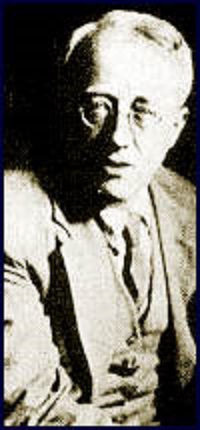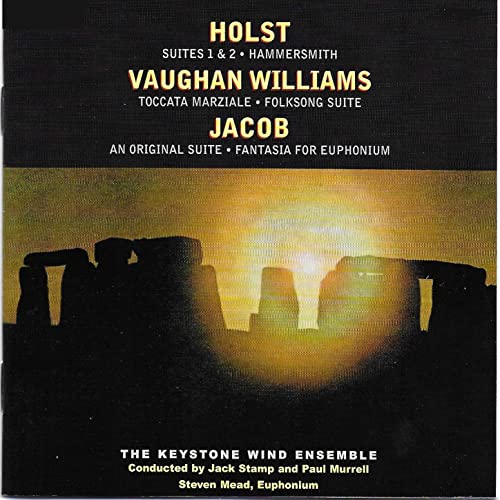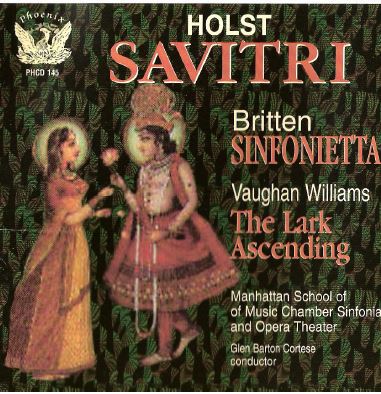
Holst, Gustav
Gustav Holst is a classical composer best-known for his orchestral suite, The Planets. While The Planets is a beautiful work and deserving of the attention it has been given, many of Holst’s other pieces receive unfortunately little attention.
Gustav Holst was born in Cheltenham, Gloucestershire, in western England, to a musical family. He served as an organist and choirmaster at Gloucestershire churches, but neuritis in his right hand forced him away from the organ. Instead he turned to the trombone.
From 1895 to 1898, Holst studied composition at the Royal College of Music, at which he later taught, under Stanford. When he left, he became an orchestral trombonist. In 1905, Holst was appointed as the Director of Music at the St. Paul’s Girl’s School in Hammersmith, a small town just west of London. Some of his pieces reflect this appointment, which he held for most of the rest of his life, such as the St. Paul’s Suite and the Hammersmith Prelude and Scherzo.
One of Holst’s contemporaries, Ralph Vaughan Williams, was a good friend of Holst’s. They wrote letters, exchanging critique and ideas. Holst had a wife, Isobel, and a daughter, Imogen.
Holst’s most famous work is, as mentioned, The Planets. This is a seven-movement orchestral suite. Each movement represents a different planet. Since it was a work based on astrology, the Earth is ignored in the movements, and the piece was written before Pluto was discovered–hence, seven movements.
Mars, the Bringer of War emphasizes bass and low brass using an unusual 5/4 rhythm. Venus, the Bringer of Peace is, as its title suggests, a softer and more melodious movement. Mercury, the Winged Messenger contains a swift and roaming melody. Jupiter, the Bringer of Jollity emphasizes a moving but unhurried bright melody. Saturn, the Bringer of Old Age has a slow, calm, and quiet melody, restful in its lethargy. Uranus, the Magician portrays musically a misty, distant heavenly body, as does Neptune, the Mystic, which includes a choral section, singing wordless melodies.
Holst composed two suites for military band–the first in E flat major, the second in F major. These pieces were designed to bring notice to band as a serious concert medium. While the concert band is recognized today, it is given sadly little attention in contrast to other concert media.
Holst’s First Suite for Military Band is composed of three movments: a Chaconne (a 3/4 piece based on variations of chords or ground bass), an Intermezzo (here, a lively piece with trumpet and oboe solos), and a concert March in finale.
The Second Suite for Military Band, instead, begins with a March. The second movement is a Song Without Words, based on a folk tune, I Love my Love. Third is the Song of the Blacksmith, a scherzo rich with syncopation and having, for rhythm, a struck anvil. It concludes with Fantasia on the Dargason, a fugue-like work consisting of an interweaving of two melodies: Greensleeves (also known as What Child is This?) and the Dargason, a Renaissance dance similar to The Irish Washerwoman.
Another of Holst’s suites is the St. Paul’s Suite, composed in 1912-1913, in gratitude to the St. Paul’s Girls’ School for having built for him a soundproof studio. The St. Paul’s Suite is written for strings, although Holst provided wind parts for his students at St. Paul’s to allow more students to take part. The St. Paul’s Suite consists of four movements: a Jig, alternating between 6/8 and 9/8 time, a presto Ostinato, an Intermezzo (labeled ‘Dance’ in the manuscript), and a Finale, arranged from the Fantasy on the Dargason from his second suite for military band. This particular canon showed up several times in Holst’s work.
Holst’s Moorside Suite was written for brass band, contrarily. This piece was composed in 1928 for the National Brass Band Championships. It consists of three movements: a Scherzo, or musical joke; a Nocturne, described by his daughter Imogen as representing “The luxury of sweetness,” which luxury he had not allowed himself since Venus in The Planets; and a final concert March.
The Brook Green Suite also refers to the St. Paul’s Girls’ School–this time to the district in Hammersmith in which it was located. It is another suite for strings, consisting of a Prelude, Air, and Dance.
Non-suite symphonic work by Holst includes a Double Concerto for two violins and small orchestra, some Songs without Words, a Lyric Movement for Viola, a Fugal Concerto for flute, oboe, and string orchestra, and the Hammersmith Prelude and Scherzo. This last work was, like some of his earliest suites, written for military band. This later work of Holst’s is more ambitious and shows more musical maturity. A revision of this piece, for full orchestra, was written a mere year after its having been composed, while the original version for military band was not performed publicly for another twenty-three years thereafter.
Holst also wrote several works for piano. These include an Arpeggio Study, a Nocturne, a Tocatta, and a Jig. Many of these pieces, like much of Holst’s other work, were based on folk music.

